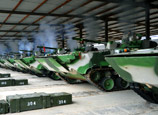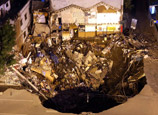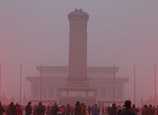
 |
| Li Jia, 18 months old, recieves intravenous medication to tackle flu symptons at Ritan Children's Hospital in Beijing. (Wang Jing/China Daily) |
Clearly understanding the symptoms is vital to combating the disease, report Shan Juan and Peng Yining.
In 1998, Beijing's funeral services were strained by a higher-than-average number of flu-related deaths, said He Xiong, deputy director of the Beijing Center for Disease Control and Prevention.
"I got a call from the Beijing civil affairs department asking why there had been more deaths than usual. I told them that it was because of a higher incidence of flu," recalled He.
However, despite greater awareness over recent years, "many people are still unable to distinguish flu from a common cold and therefore greatly underestimate the hazard it poses", he warned.
So far this winter, eight flu-related deaths have been reported in China, seven of them in Beijing, according to the Ministry of Health.
On Dec 27, a 22-year-old migrant worker, infected with the H1N1 strain, died, becoming the first flu-related fatality in Beijing of the winter.
According to the Beijing CDC, on Dec 25 the woman had a severe cough but by the next day had developed a high fever.
Because she had difficulty breathing, the patient was sent to the Beijing Chaoyang Hospital on Dec 27, but she later died as a result of acute respiratory failure.
According to reports, the patient was anemic and in poor health when she became infected. The same was true of a second victim of H1N1, a 65-year-old woman in the terminal stages of bone marrow cancer, who died on Jan 4. Neither of them had received a flu vaccination.
The number of cases of flu and related fatalities in Northern China is expected to rise before winter ends, according to Shu Yuelong, director of the National Influenza Center, under the Chinese Center for Disease Control and Prevention.
 |
















 Buildings collapse after subsidence in S China
Buildings collapse after subsidence in S China


![]()
